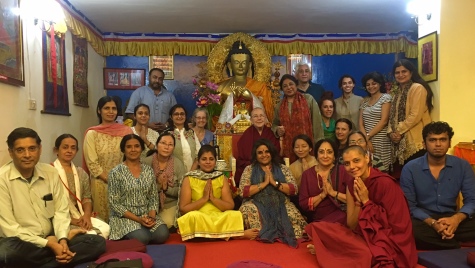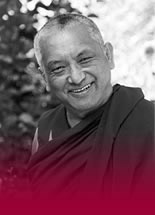Travel Blogs
24 October, 2016 | India
I’ve been a month in India since leaving Kathmandu on September 24. Delhi first, then changed flights for Dharamsala – as they call the airport in Kangra, even though it’s 40 minutes southwest of Dharamsala.
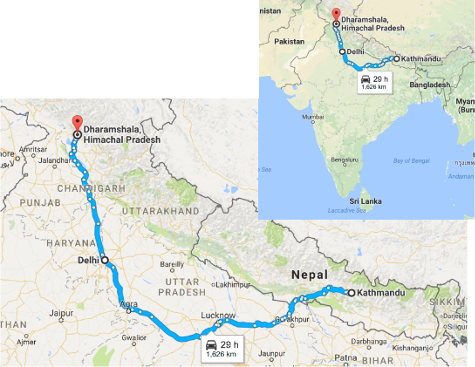
This was my first visit since I left in April 2011, which is also when I wrote Postcard 1, reporting on my circumambulations of the globe, which continue still: I’m now on my sixth.
When I was first in India, in 1978, the only way to get up there from Delhi was the train or to drive. Driving was rare, but you did it sometimes. It was considered luxurious and cost $100 to hire a taxi to take you on the 12-plus-hour meander through the Indian roads. The car was an Ambassador, ubiquitous then. It seems to have been based on the sturdy English Morris. Apparently Hindustan Motors, its maker, stopped producing them in 2014.
For the train, it was a complicated affair: you had to go to the station in advance and buy a special ticket for tourists. Ideal was a first class sleeper for the overnight journey, and it cost just a few dollars. The cabins were relatively spacious, I remember. You arrived at dawn at Pathankot where you took a taxi for the remainder of the journey up the 1800+ meters to McLeod Ganj, the little village above Dharamsala where His Holiness had settled his Tibetan government-in-exile in the early 1960s and where, of course, Tibetans gathered.
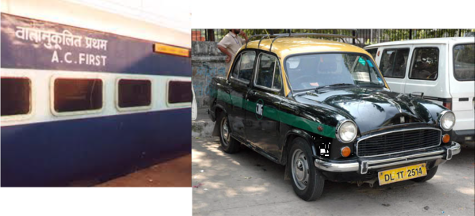
The coveted first class sleeper and an Ambassador taxi were the methods for getting from Delhi to Dharamsala in the 1970s.
My second journey up there, by train, six months after I was ordained in February 1978, was memorable. I had moved from Kopan in Kathmandu to Delhi to work with Dr. Nick to help him grow Wisdom Publications, which he had started at Kopan in the early 70s with his output of Roneod foolscap copies of Rinpoche’s lam-rim teachings. Lama had sent Nick to Delhi to open the new center, Tushita, so I joined him there.
It was my first serious job since my ordination, from March till July, and I took it seriously. We had worked out a list of titles by Lama and Rinpoche and I spent much of my time finding typesetters, printers, binders and the rest, discovering Delhi on the way. I remember being impressed by the productivity of India. I was astonished at the number of magazines and newspapers published, for example. And I was impressed by the professionalism of the people I met.
But the most striking thing was the heat. I’d never experienced anything quite like it. We’d have our heat waves in Melbourne, but just for a few days, and then the glorious cool change would come. But not in Delhi. The heat starts becoming serious in April, and then keeps building, brutally and relentlessly, until the rains arrive in July. There was never a second’s break from the 85–105 Fahrenheit (30–40 degrees Celcius) temperatures – not to mention the not uncommon 110 degrees. The sky was cloudless and blue every day, and the hot dry air practically seared your lungs. And it was inescapable. Who had the luxury of air conditioning? We certainly didn’t at Tushita. There was no respite.
Mercifully, I’d decided to spend the rainy season in retreat at Tushita in Dharamsala. The center started in 1971, when Trijang Rinpoche, Lama Yeshe and Lama Zopa Rinpoche’s root guru and His Holiness’s Junior Tutor, offered Lama his home in the hills above McLeod Ganj, a tiny village above Dharamsala. “Hill stations” was what the British colonialists named these lovely, verdant places 2,000 meters above the plains of Delhi, where the government was.
So what was so memorable about this train journey to Dharamsala? A cool breeze, that’s all. A breeze. I will never forget it, ever. The train was a first class sleeper, but not AC, and I slept with the window open. As we neared Pathankot at dawn, that breeze, that blissful, miraculous soft, cool air, touched my face. It was a miracle. I remember reading somewhere about the merit of “even a cool breeze in hell,” something like that. That’s what it felt like.
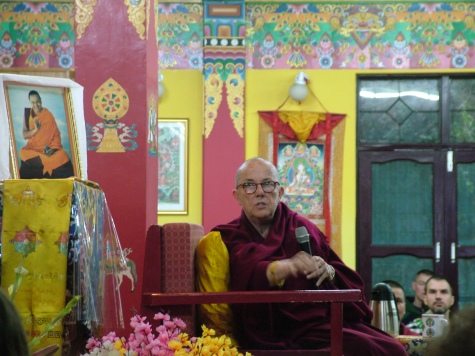
Back at Tushita now: I was glad to sit again in one of “my” red chairs!
-------
It was nice to be back at Tushita since my year here in 2010. Attachment arose in the mind when I saw the nice red armchairs I’d commissioned the carpenter to make for the apartment below Rinpoche’s, where usually Rinpoche’s attendants sleep and cook, etc. That was my home for the year. There were three chairs, plus a day bed, which I’d sleep in and which, after rolling up the bedding, voila, would become a sofa for the rest of the day. I don’t like beds as such. I much prefer to sleep on a sofa: it’s usually about my length, five feet, and just wide enough, and I like to lie against the back of the sofa.
When I was based in San Francisco, at Tse Chen Ling, when I worked for the prison project, I had the smallest room in the house – my choice – tailor-made to my needs, including an armchair, which I sat in at a coffee table to do my work (no space for a desk), and a matching day bed. The room was not much longer than the day bed itself and a little more than twice the width. Perfect. Everything I needed was within arm’s length. It was my bedroom, my lounge room, and my office. The chair I had there was the basis for the design of the red chairs at Tushita. Even my TV was small: precisely seven inches!
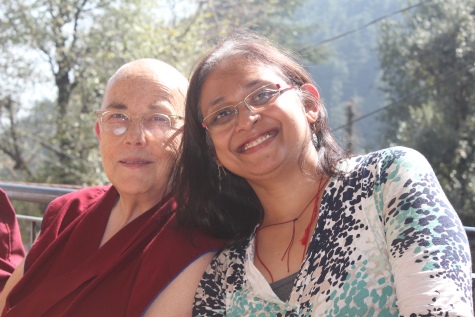
With Tushita Dharamsala’s new director, Archana.
Tushita in Dharamsala has a new director since I was there last. Archana has just taken over. She’s great, in my opinion! She has management experience, which is such a plus.

Above: Lunch in Dharmkot with Tushita staff and volunteers on the last day of my three-week stay. Second from left is Gen Glen Svensson, one of the first graduates of Istituto Lama Tzong Khapa’s amazing Master’s Program, and at the end is Ven. Kunphen, the spiritual program coordinator for numberless years now. The nun next to me is Ven. Drolma, the new resident teacher. Below: The traditional group shot after our course on how to help at the time of death.

I spent a few days down the hill at Thosamling Nunnery, a 45 minute drive. It’s an independent nunnery, mostly for foreigners. I was glad to see Ven. Mary Smith again (I always forget the name His Holiness gave her), our old friend from the prison project in San Francisco.

Left: Jimi Neal and Thorhalla; right: Ven. Mary Smith.
And, from even earlier days, American Jimi Neal and Thorhalla from Iceland, both old students of Lama Yeshe and Rinpoche. They live next door to each other in Sidhpur, not far from Thosamling.
Then it was back to Delhi last Monday, October 17, where I am now. I met again Sharon Lowen, born in Brooklyn but who’s spent the last 40-plus years in Delhi as one of the foremost Odissi dancers here. You can read a recent story about her in The Hindu newspaper: http://www.thehindu.com/features/friday-review/sharon-lowen-an-envoy-of-indian-culture/article8649957.ece
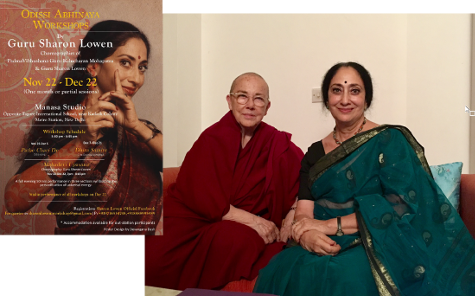
With Brooklyn-born Sharon Lowen, in Delhi, an eminent classical dancer.
She had her 99-year-old mother come from the States to live with her in Delhi. Sharon says that His Holiness the Dalai Lama is always so kind to her.
All week at Tushita we've been talking about how to help at the time of death. People love this topic! Everywhere the centers want it. And it’s always very moving. Often, I’ve noticed, certainly in the West, people who wouldn’t normally come to Buddhist courses, such as Christians, would turn up; they say they trust the Buddhist approach to death. And, interestingly, funeral directors, in particular most recently in Australia. I met two wonderful people, a man and a woman: so compassionate, so interested in how to support the wishes of the families and the dead themselves.
One of the problems about dying in hospitals, from the Buddhist perspective, is that you don’t have the luxury of the three days that all the lamas recommend allowing the body to stay without disturbance. Because that’s how long it can take for the very subtle consciousness – the subtlest level of our being, our mind, our consciousness – to leave the body. At the most you might have an hour or two before the bed needs to be vacated, which means you have to disturb the body, which in turn means it’s likely you will disturb your loved one’s mind.
Until the subtle consciousness leaves the body, the person is not dead. The trouble is, of course, according to the prevailing medical opinions, death is when the breath stops, the brain stops. In Rinpoche’s book it’s advised to help the consciousness leave the body through the crown chakra by pulling on the hair there, or tapping, very vigorously.
Alternatively, you could easily leave the body in the fridge at the hospital or have it moved very carefully to the mortuary. The funeral directors told me that they’re prepared to do that. Sometimes bodies stay there for weeks or months, such as in the case where family members have to come, etc., or legal problems.
Unfortunately, this advice isn’t in the book, because it wasn’t in Rinpoche’s teachings; Rinpoche has since given the advice for a nun who died to “stay in the fridge for ten days.” Perhaps she was meditating? That’s possible, of course, for those who are in control of the death process and stay at the subtler level, meditating, getting realizations.
All this is talked about, of course, in Rinpoche’s book, which you can download for free: fpmt.org/edu-news/a-new-book-by-lama-zopa-rinpoche-how-to-help-your-loved-ones-enjoy-death-and-go-happily-to-their-next-rebirth.
And in India, you can take the body from the hospital and have it at home for rituals, etc. This would be ideal. In the West, probably not; once the person has died in hospital, you can’t take the body home.
My last day is today, Monday the 24th; off to the airport for my 1:45pm flight to Kathmandu.
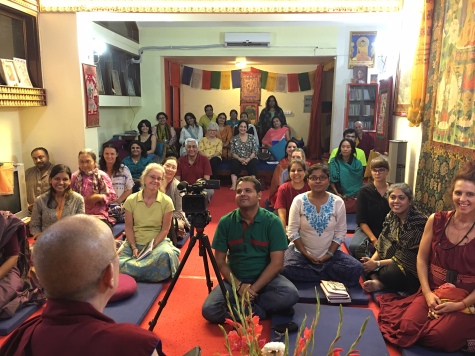
At Tushita in Delhi, talking about how to help at the time of death. Below, Tushita’s director Dr. Renuka Singh, to my left, and spiritual program coordinator Ven. Samten, front.
